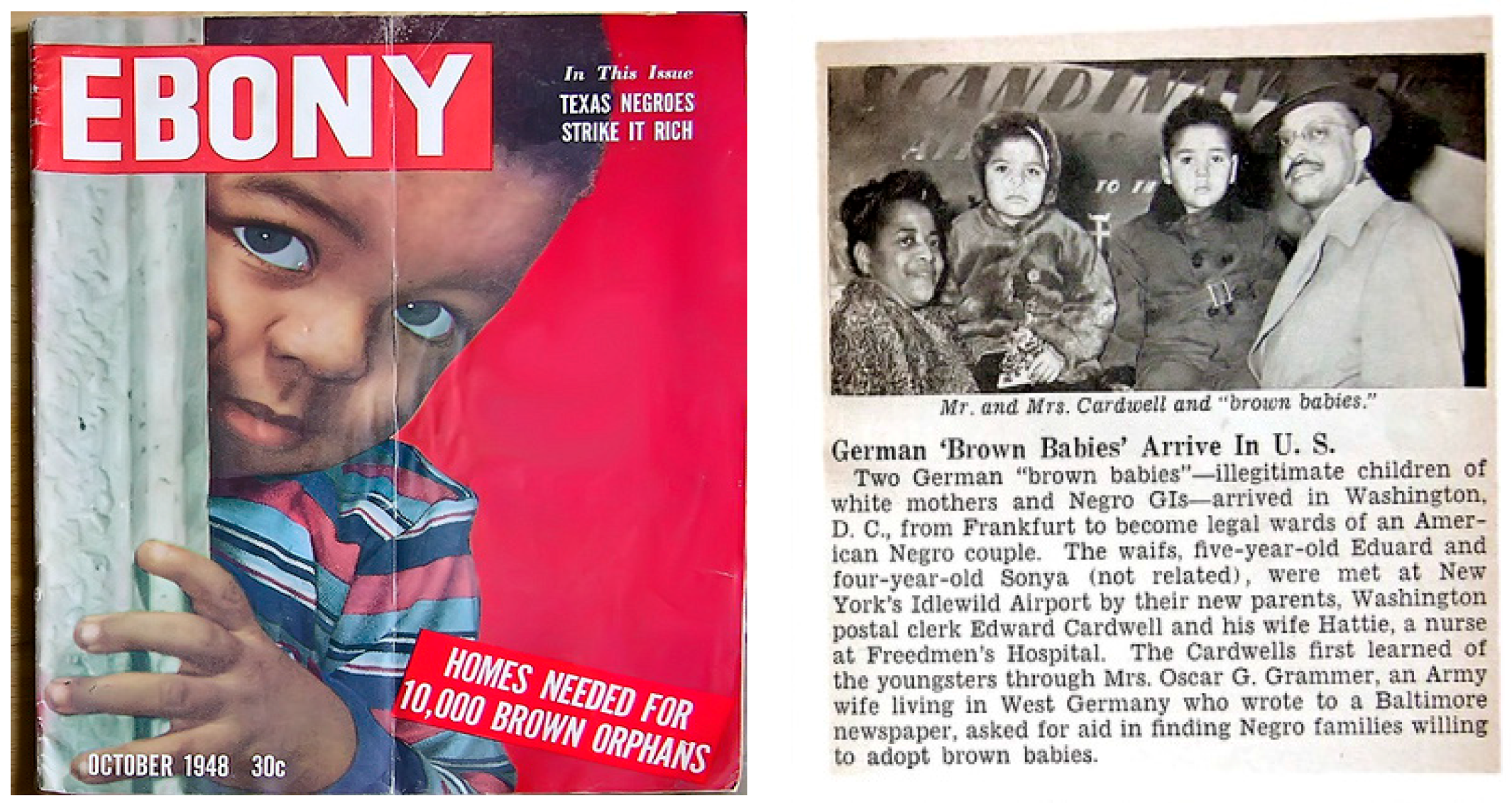That was the Worst Day of My Life: Recrafting Family through Memory, Race, and Rejection in Post-WWII GermanyPosted in Articles, Biography, Europe, History, Media Archive, Women on 2019-03-03 03:03Z by Steven |
Genealogy
Volume 1, Issue 2 (2017)
25 pages
DOI: 10.3390/genealogy1020011
Tracey Owens Patton, Professor
Department of Communication & Journalism
University of Wyoming
 Figure 1. Ebony October 1948 (on left); “Brown Babies Adopted by African American Families, Jet Magazine, 8 November 1951 (on right) (Jet Magazine 1951). |
This research project is a historical and narrative study of cross-racial, international couplings between Black U.S. servicemen and White German women during WWII and the children who resulted from these relationships. Once pejoratively referred to as “Brown Babies,” or worse, often both the U.S. and German governments collaborated in the destruction of families through forbidding interracial coupling and encouraging White German women to either abort mixed raced babies or give up these children for international adoption in an effort to keep Germany White. Using my own family’s history to show that mixed race children are the dross that needed to be removed from Germany, I employed memory and post-memory as my theoretical framing, coupled with authoethnography, family interviews, and narratives as my methodological tools. Of primary concern is what place Black German children and their mothers were allowed to occupy in the German national imagination and to what extent their individual rights and interests were superseded by the assertion of state interest in managing the German citizenry. Ultimately, it is argued that different tactics of constituting Germanness as homogenously White comes at the expense German women’s rights over their bodies and the exclusion of mixed race Black German children.